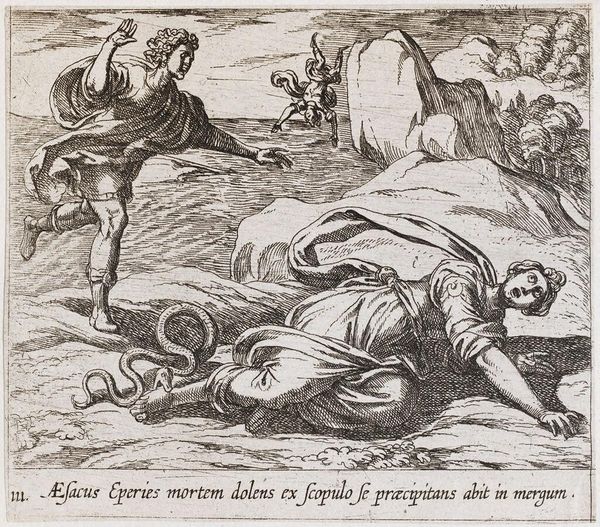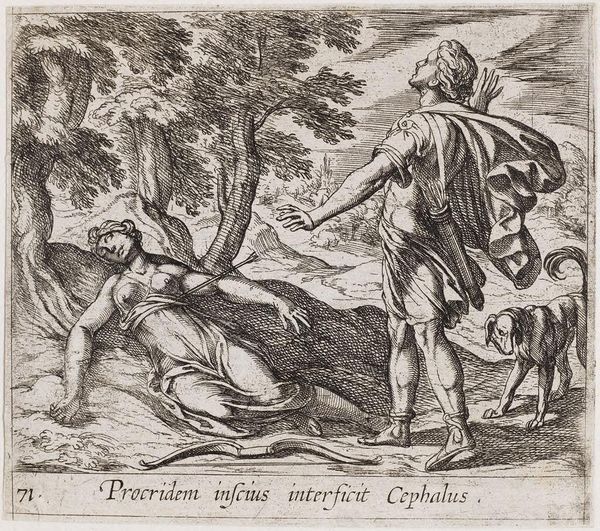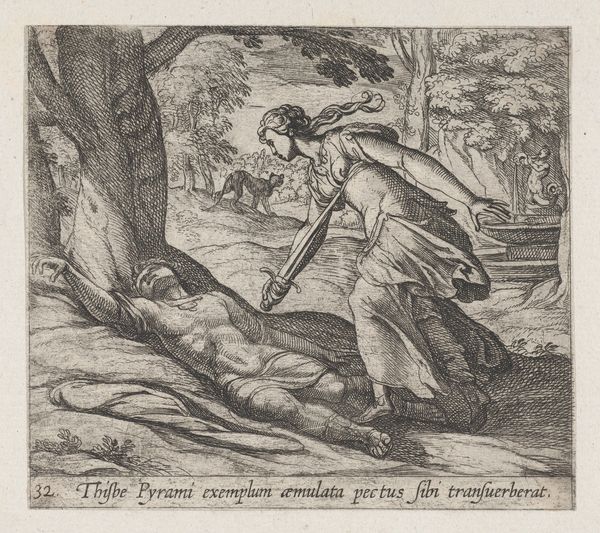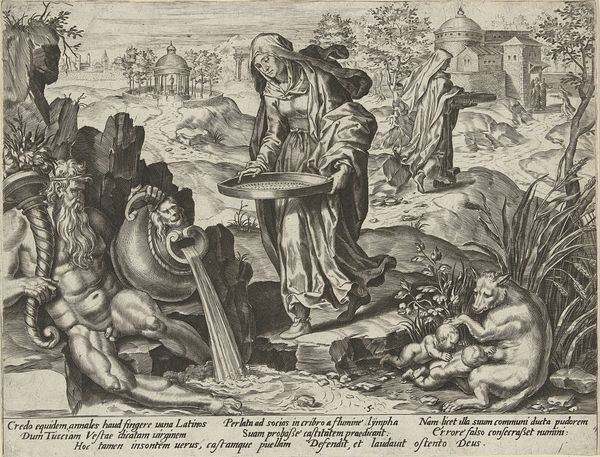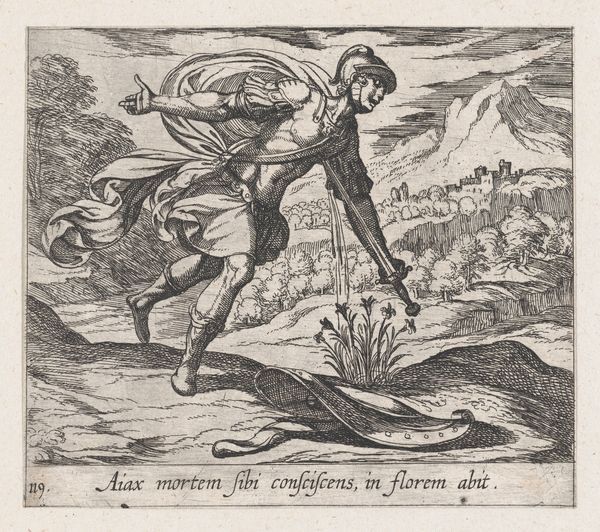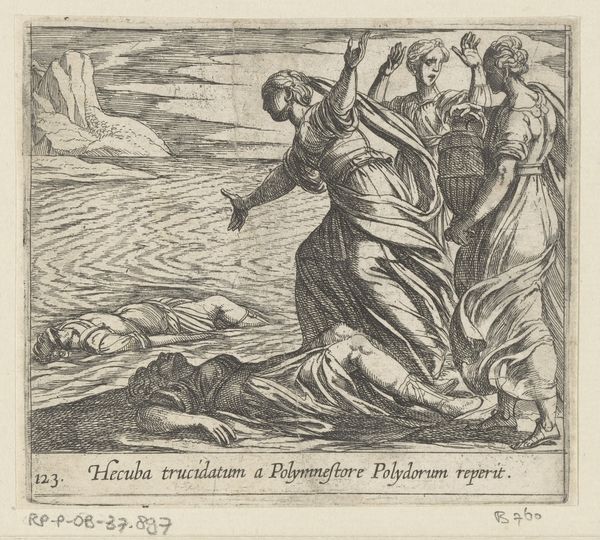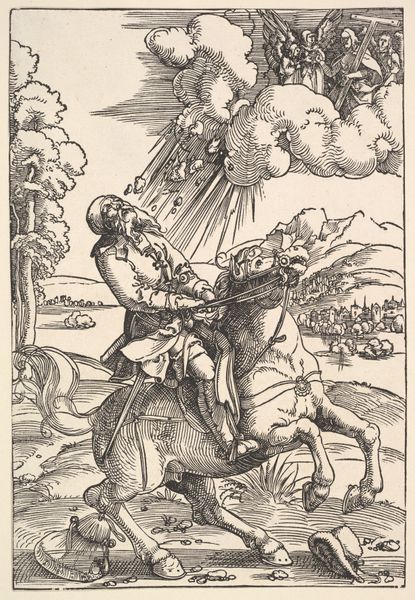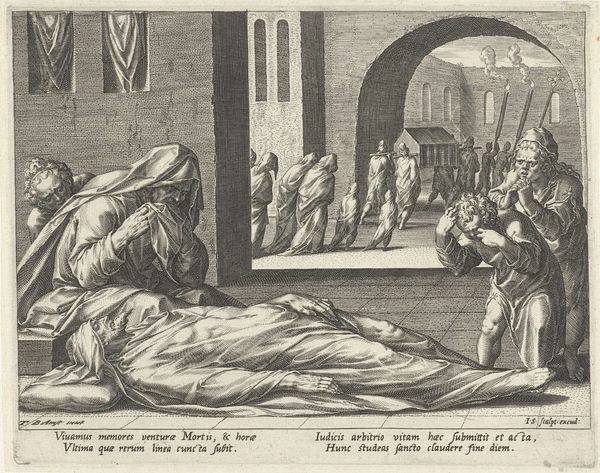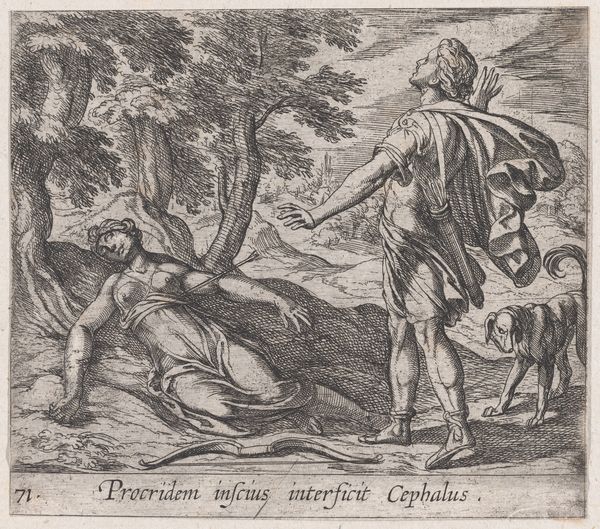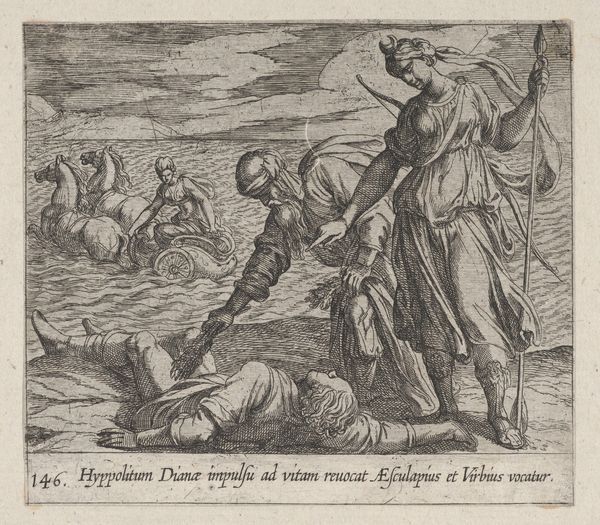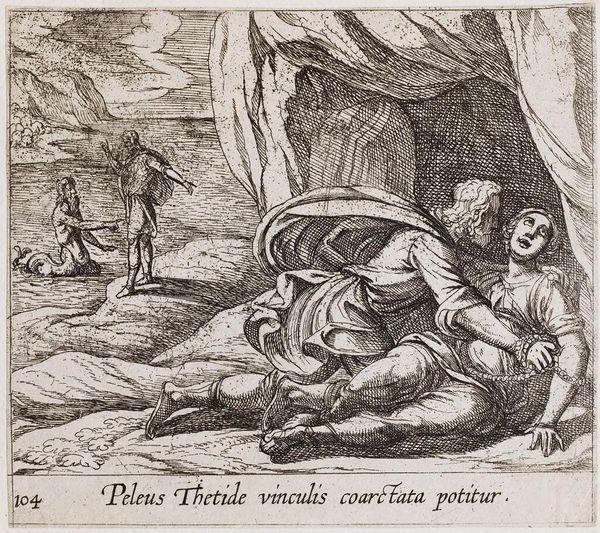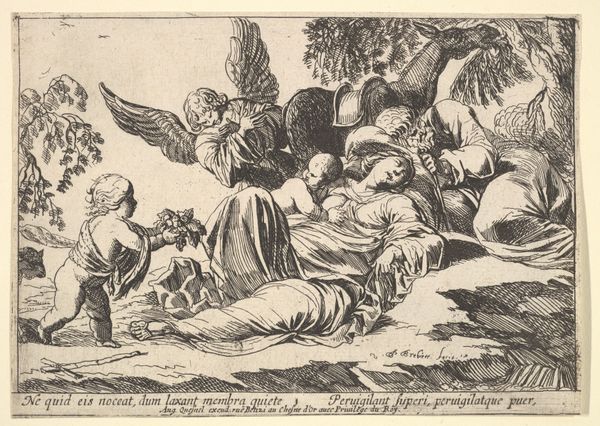
Plate 111: Aesacus and Hespeia (Aesacus Eperies mortem dolens ex scopulo se praecipitans abit in mergum), from Ovid's 'Metamorphoses' 1606
0:00
0:00
drawing, print, engraving
#
portrait
#
drawing
#
narrative-art
# print
#
figuration
#
history-painting
#
italian-renaissance
#
engraving
Dimensions: Sheet: 3 15/16 × 4 1/2 in. (10 × 11.5 cm)
Copyright: Public Domain
Here, we have Antonio Tempesta’s ‘Aesacus and Hespeia’, an engraving from Ovid's Metamorphoses. The stark lines carve out a scene of tragic transformation. Tempesta uses a dynamic composition, bisected diagonally by the jagged rocks, to amplify the emotional turmoil. On one side, Aesacus leaps from the cliff, his body mirroring the arc of his despair, about to transform into a diving bird. On the other side, Hespeia lies lifeless, a serpent slithering nearby, the cause of her demise. This engraving operates as a semiotic system. The serpent, a conventional signifier of death and treachery, contrasts with Aesacus's transformation, suggesting escape from earthly suffering. The landscape, rendered with meticulous detail, emphasizes the cold indifference of nature to human tragedy. The artist uses the formal qualities to explore themes of loss, transformation, and the complex interplay between humans and their environment.
Comments
No comments
Be the first to comment and join the conversation on the ultimate creative platform.
